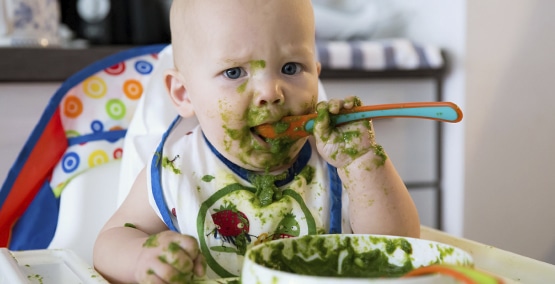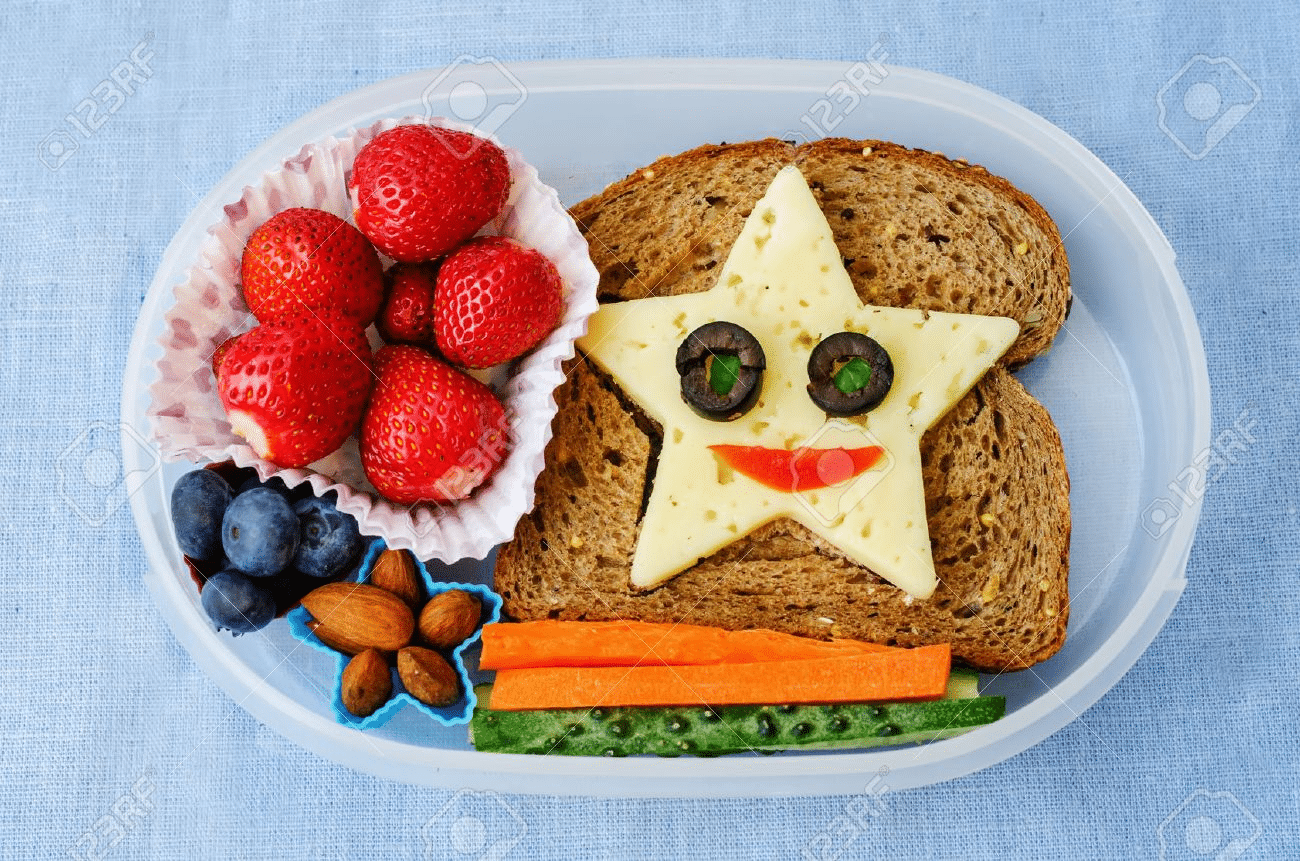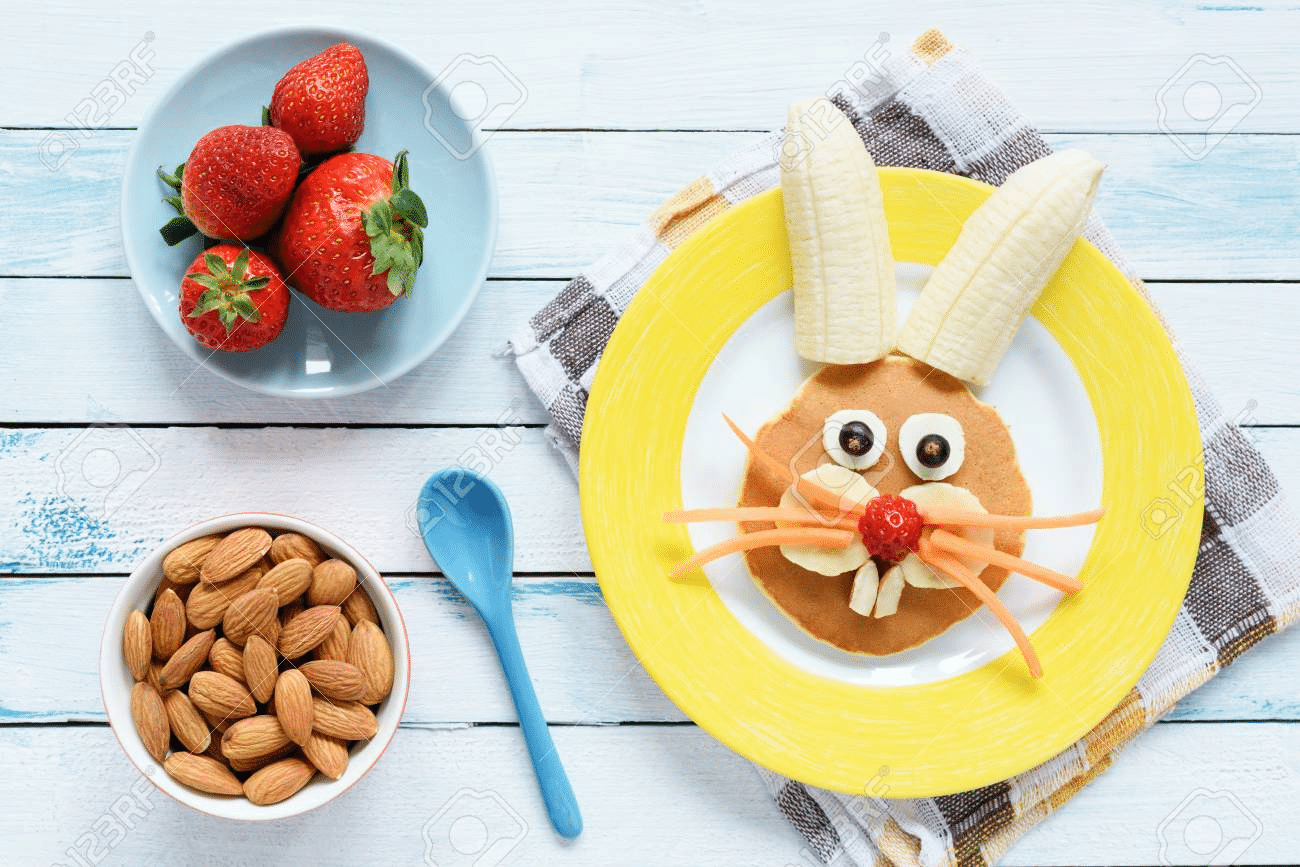
First steps in self feeding
Encourage your baby's messy eating
-How to encourage babies when they are learning how to feed themselves
Self-feeding is a big milestone. Lower your expectations, raise your tolerance level. It's a messy job, but everybody's got to learn how to do it. It will take a few more months before she becomes skillful– and even longer before she will be neat. In the meantime, carrots in the hair (both yours and hers), peas on the floor, fingerpainting with the mashed potatoes are all normal consequences. Spread a shower curtain, newspapers, or sheet under the highchair for an easy clean-up splat mat.
- For finger skills, at 9 or 10 months, your baby should be:
- picking up finger foods with thumb and forefinger and holding foods while eating (make sure they are small, one-bite pieces, and only a few at a time)
- drinking from a cup with a little help (make sure there are only a few sips in her cup)
- For spoon skills
- Give your baby her own spoon as soon as she begins to grab the one you're using to feed her.
- Help your baby hold the spoon and lick it or dip it into food and aim it toward her mouth; load the spoon for her.
- Stick to the easy spoon foods in the beginning:
- Yogurt
- Applesauce
- cooked cereal (oatmeal, Cream of Wheat/Rice)
- macaroni/orzo/pasta/rice
- mashed potatoes
- mashed vegetables and fruits

Encourage your baby and give her time to practice with a wide variety of tastes and textures.
Adapted from Nurturing with Nutrition by Dr. Melanie Bezarte and Lucille Beseler, RDN




